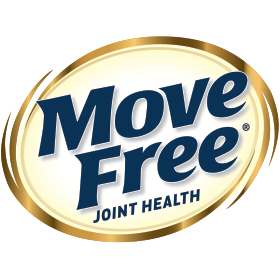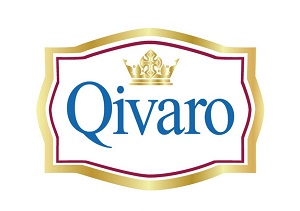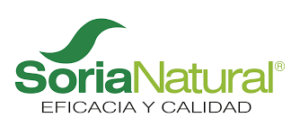
Tips for Staying Healthy in Hot Weather
The recent hot weather, occasionally accompanied by gusty winds and rain, and high humidity not only make people feel stuffy, but also become a breeding ground for bacteria and viruses. In addition, people frequently travel between air-conditioned indoor environments and high temperatures outdoors, and the drastic temperature difference can easily lower one's immunity, making it possible to get sick if one is not careful. In this issue, we invite doctors to discuss common summer illnesses and ways to prevent them, covering a wide range of problems such as heat stroke, skin infections, colds and intestinal discomforts.
Dr Wong Chak-tong, Specialist in Family Medicine at Hong Kong Sanatorium & Hospital (HKSH), pointed out that heat stroke is often confused with heat exhaustion, as the symptoms of the two conditions are similar but their severity is very different. Dizziness, headache and general weakness after spending time outdoors in summer are often the first signs of both conditions. The human body has a mechanism to regulate its own temperature, for example, when it is hot, it will cool itself by sweating and breathing faster. However, if you are exposed to high temperatures for a long period of time and are not adequately hydrated or have lost too many electrolytes, the thermoregulatory system may malfunction, leading to an increase in core body temperature and the further development of symptoms of heat exhaustion, which may include dizziness, headaches, muscle pains, accelerated heartbeat and pulse rate, and shortness of breath. In heat exhaustion, the body temperature usually remains below 40 degrees Celsius, and the body sweats profusely in an attempt to regulate its temperature, resulting in moist, cool skin all over the body.
C.T. Wong further explained that if heat exhaustion is not treated in time and continues to deteriorate, it can develop into heat stroke. When the core body temperature exceeds 40 degrees Celsius, the brain's thermoregulatory function fails completely, the body stops sweating, and the skin becomes dry and hot. At the same time, the heartbeat and pulse become extremely rapid and strong as the body's blood vessels dilate abnormally. Heatstroke patients may appear confused, vomiting and even coma and other symptoms, if not immediately take treatment measures, not only will be life-threatening, but also on the brain, kidneys, liver and other organs may cause damage, and in serious cases will lead to multiple organ failure.
If a person is found to be suffering from heat stroke or heat exhaustion, immediate cooling measures should be taken, such as moving the patient to a cooler place, switching on the fan to ventilate the room, or drenching the patient's body with water, applying wet towels, etc. However, it should be noted that the patient should not be allowed to drink a large amount of water at this time, especially if he is unconscious or vomiting. However, it should be noted that the patient should not be allowed to drink a large amount of water at this time, especially in the case of confusion or accompanied by vomiting, the water may be inadvertently into the trachea and inhaled into the lungs, leading to aspiration pneumonia. If the patient's symptoms do not improve after the temperature is lowered, he/she should be sent to hospital immediately.
High temperatures and high humidity can also lead to a variety of sweating-related skin problems. According to Wang Zetang, there are two main types of skin diseases that are common in summer: infectious skin diseases caused by pathogens, such as fungal or bacterial infections, and non-infectious skin diseases.
Fungal and bacterial infections are both superficial skin infections, and are commonly seen as sweat patches and erythema. Sweat spots are most common on the hands and feet, chest and back, while erythema occurs in skin folds or areas where sweat tends to accumulate, such as the inner thighs. The key to preventing these superficial infections is to pay attention to personal hygiene, keep the skin dry and cool, and if symptoms occur, topical antifungal or antibiotic ointment can usually be used to treat them.
Non-infectious skin diseases such as sweat rash and heat rash are common in children. This is due to the fact that children's pores are small or easily blocked, which prevents sweat from escaping normally and accumulates in the hair follicles, irritating the skin and causing inflammation. An effective way to prevent these problems is to reduce excessive sweating and dry off after sweating to avoid pore clogging; in addition, sweat accumulating outside the hair follicles will swell the stratum corneum, which may also clog the pores, and requires extra attention.
During the hot summer months, air-conditioning is switched on at home, at work, at school and in shopping malls, causing many people to suffer from symptoms. Wang Zetang explained that these symptoms are known as "air-conditioning disease" or air-conditioning adaptation disorder, and their manifestations are similar to those of the common cold. There are various explanations for the cause of the disease, including the body's inability to adapt quickly to temperature changes, headaches and stiffness in joints caused by cold air blowing directly on exposed parts of the skin, or irritation of the respiratory tract by allergens such as moulds, bacteria and dust mites that breed in air-conditioning units, which can trigger nasal allergy or asthma and symptoms such as runny nose and wheezing. As these symptoms are very similar to those of colds, they are often mistaken as "air-conditioning sickness".
High temperature not only brings discomfort, but also accelerates the reproduction of disease-causing viruses and bacteria. Wang Zetang reminds that high temperature makes food easily deteriorate, and summer eating habits are also the cause ofGastrointestinal discomfortHowever, if these foods are not properly prepared or stored, they may be contaminated by bacteria. Many Hong Kong people like to choose cool food such as ice drinks, ice-cream and ice lollies in summer. However, if these food items are not properly handled during the production or storage process and are contaminated with bacteria, consumption may lead to the risk ofBowel problems。
This type of gastrointestinal discomfort is mainly classified into viral gastroenteritis and bacterial gastroenteritis. Norovirus is the common causative agent of viral gastroenteritis, which may be transmitted to others through excreta in crowded places such as schools, kindergartens and playgrounds; while bacterial gastroenteritis is more common with Salmonella infection, which is mainly caused by consuming undercooked and contaminated food. To prevent gastrointestinal discomfort, apart from paying attention to personal hygiene and washing hands before eating, we should also reduce the consumption of high-risk foods, such as oysters, sashimi, and ice in iced drinks.




































































